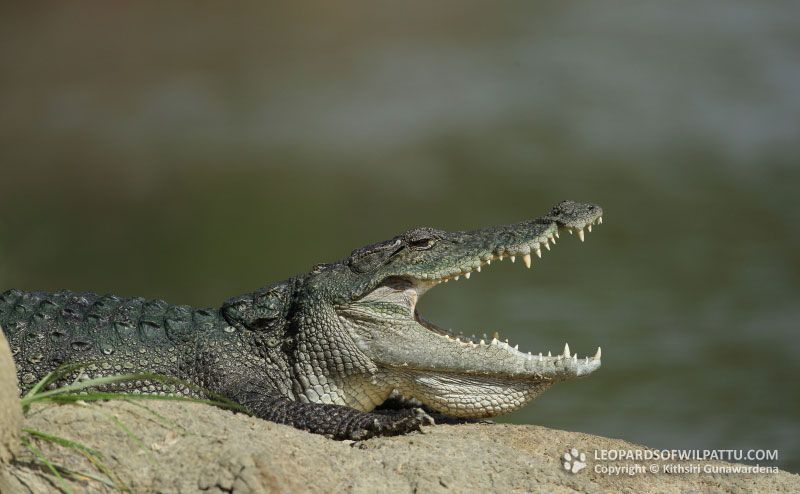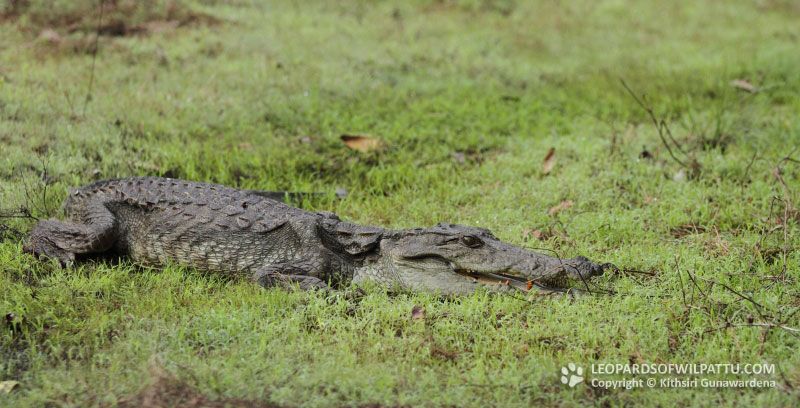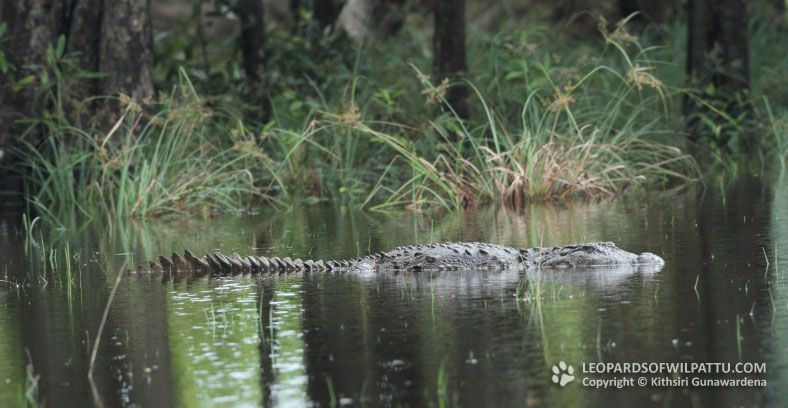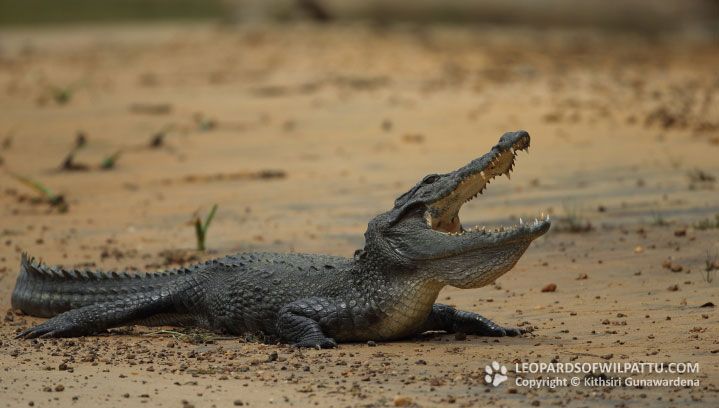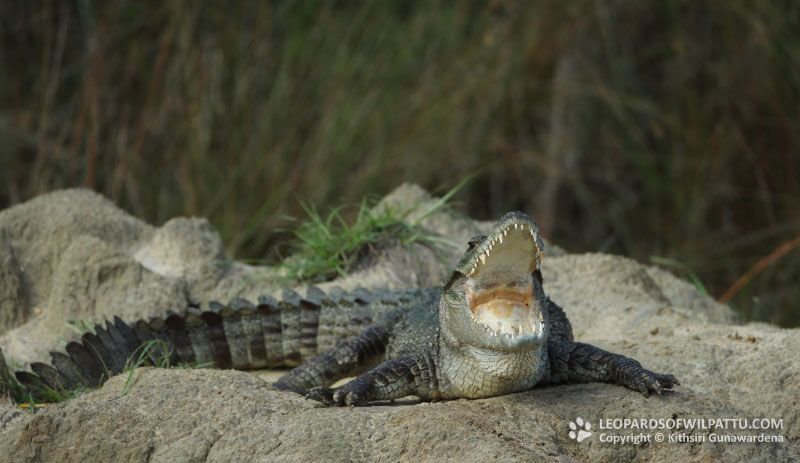
Reptiles ‹‹ Go Back
Sri Lanka is inhabited by two species of crocodiles. The above prefers slow moving or stagnant fresh water habitats where as the Salt-water Crocodile Crocodylus porosus prefers salt or brackish water habitats. Other than in Sri Lanka the Mugger Crocodile is found from eastern Iran, to Pakistan, India, Nepal and Bangladesh. The conservation status of the species under reference is regarded as Near Threatened (National Red List 2012).
The Mugger Crocodileis a species strictly protected under the Fauna and Flora Protection Ordinance as amended by Act No. 22 of 2009.
This species has the broadest snout of any crocodile, which gives it the appearance of an alligator. The adult males are bigger than the females and can reach a length of 12-15 feet. These crocodiles inhabit most of the fresh waterways in the country including rivers, lakes, tanks and marshes. During the nesting season the females would dig a hole in the ground, close to the waters edge, and the incubation temperature of the eggs determine the sex of the crocodiles that would be born from each nest. During the dry season they are known to shelter in burrows.
The Mugger is more common than the Salt Water Crocodile. I have observed this species in most of the dry zone national parks throughout the low lands of the country such as Udawalawa, Yala, Minneriya, Lunugamvehera, Gal Oya, Wasgomuwa, Bundala, Kaudulla, Somawathiya and Kumana. It is found in most of the dry zone tanks, rivers and waterways as well. In the north I have seen them at Mirusaveli in the Jaffna peninsular, Mannar and Vidaththalthivu. They are still found in all the big water bodies in the dry zone as well as the water bodies in the low country wet zone. Even though they are found at the foothills up to an altitude of about 500 meters it is not found any where in the hills. The Mugger is found in marshes close to Colombo such as Bellanwila Attidiya and Muthurajawela. Even though there have been a few attacks on humans this species is not as aggressive as the salt-water crocodile and quite often seen even close to human habitations in the dry zone tanks.
In Wilpattu the Crocodile that is observed in most water bodies as well as the Kala Oya in the south and the Modara Gam Aru in the north is this species. In late October I observed a group of 12 baby crocodiles of this species at Percy Bendi Wewa. They were newly born and were all huddled together under a bush on the edge of the water. The adult was seen in the water close to them. I observed one of these crocodiles on each of my visits during August and September in a burrow that has been dug in to the short bund at Palu Kola Wala even though this water hole was completely dry. I was expected a nest as these crocodiles are well known to travel long distances in search of fresh water bodies during the dry season. By late October there were tiny baby crocodiles that were seen with the first rains. The adult was not seen there after. It was apparent that the maternal instincts of the need to protect the nest resulted in this behavior. These animals wander a great deal and after a few weeks of being born they will instinctively go in search of new water bodies. On a few occasions I have come across small crocodiles and Turtles other than the usual frogs in the pools of water found on the roads in side the park. Thus one needs to be careful and should drive across them at very slow speed to permit these animals to move out.

